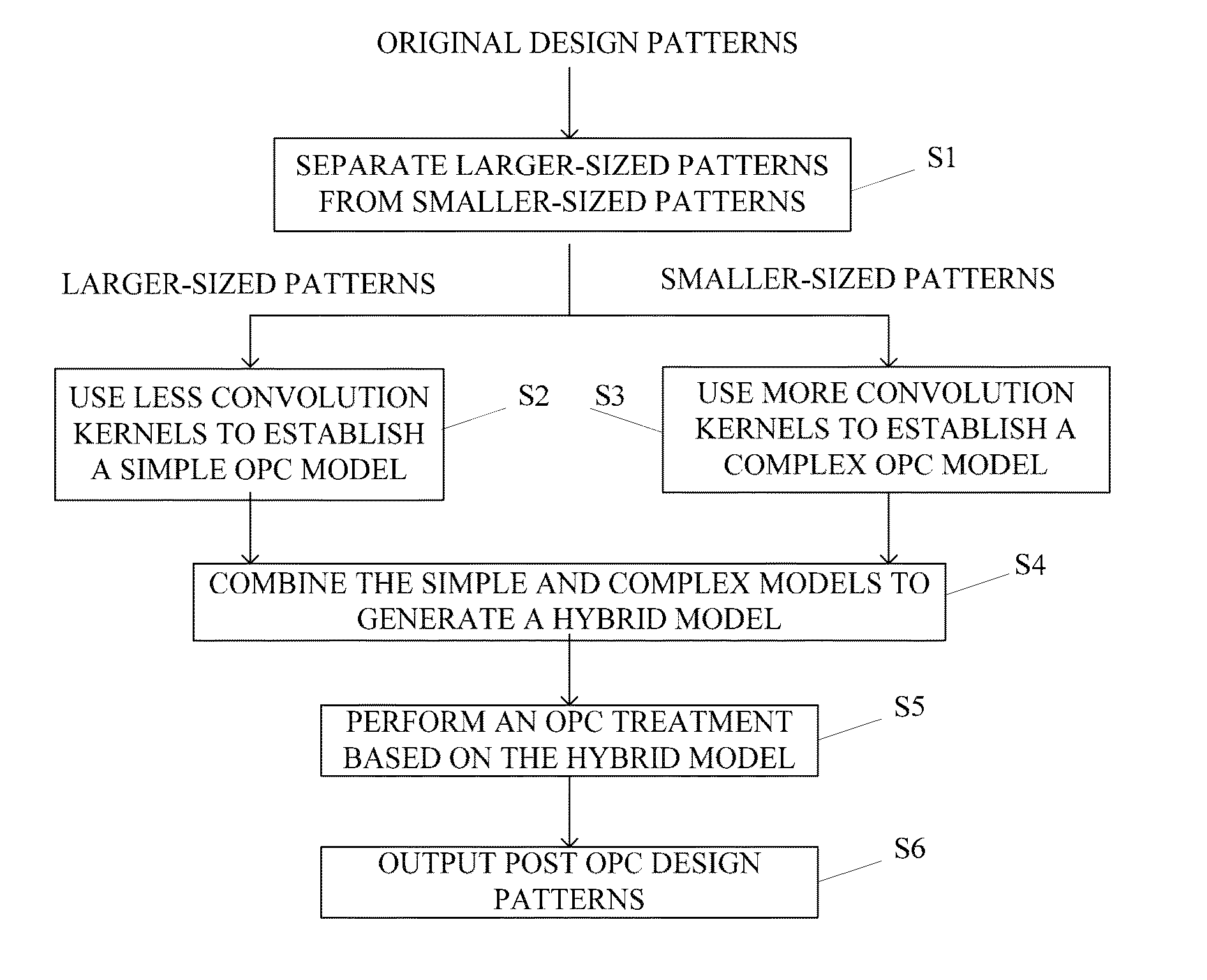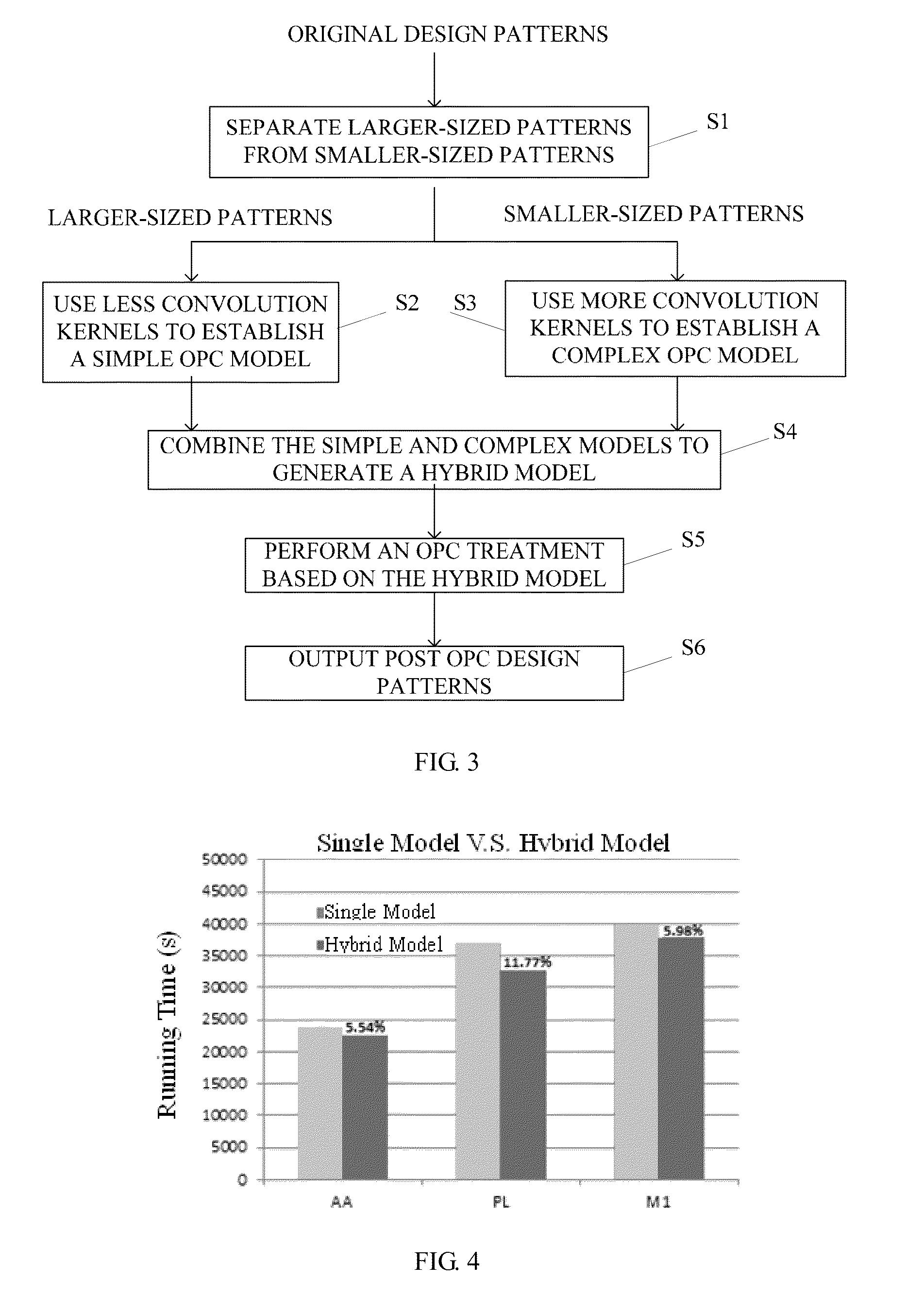Optical proximity correction method based on hybrid simulation model
- Summary
- Abstract
- Description
- Claims
- Application Information
AI Technical Summary
Benefits of technology
Problems solved by technology
Method used
Image
Examples
Embodiment Construction
[0020]The present invention will be further described with reference to the following detailed description of exemplary embodiments, taken in conjunction with the accompanying drawings. Features and advantages of the invention will be apparent from the following detailed description, and from the claims. Note that all the drawings are presented in a very simple form and not drawn precisely to scale. They are provided solely to facilitate the description of the exemplary embodiments of the invention in a convenient and clear way.
[0021]FIG. 3 illustrates process steps (S1 to S6) of an optical proximity correction (OPC) method in accordance with one embodiment of the present invention.
[0022]In step S1, original design patterns are grouped into a first group and a second group by their sizes.
[0023]The original design patterns are of a layout designed for a given semiconductor device fabrication process and provide a basis for wafer fabrication.
[0024]The original design patterns are grou...
PUM
 Login to View More
Login to View More Abstract
Description
Claims
Application Information
 Login to View More
Login to View More - R&D
- Intellectual Property
- Life Sciences
- Materials
- Tech Scout
- Unparalleled Data Quality
- Higher Quality Content
- 60% Fewer Hallucinations
Browse by: Latest US Patents, China's latest patents, Technical Efficacy Thesaurus, Application Domain, Technology Topic, Popular Technical Reports.
© 2025 PatSnap. All rights reserved.Legal|Privacy policy|Modern Slavery Act Transparency Statement|Sitemap|About US| Contact US: help@patsnap.com



